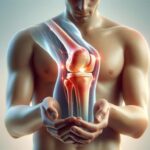Understanding Osteoporosis: A Growing Health Concern
Osteoporosis is a condition characterized by a gradual loss of bone density, making bones fragile and more prone to fractures. Affecting millions worldwide, especially older adults and postmenopausal women, osteoporosis often progresses silently until a fracture occurs. As life expectancy increases, the prevalence of osteoporosis is expected to rise, making it a significant public health concern. Common fracture sites include the hip, spine, and wrist, and these injuries can lead to serious complications such as loss of mobility or independence.
Early detection is crucial in managing osteoporosis effectively. Bone mineral density (BMD) tests, such as dual-energy X-ray absorptiometry (DEXA), are widely used to assess the risk. Risk factors include age, gender, family history, sedentary lifestyle, low calcium and vitamin D intake, and certain medications. Understanding these elements can help individuals and healthcare providers take proactive steps to reduce the risk of bone loss.
Recent Advancements in Diagnosis and Monitoring
Ongoing innovation in diagnostic tools has significantly improved the ability to identify osteoporosis in its earlier stages. By 2025, more advanced imaging technologies and biomarkers are expected to enhance precision in bone health assessments. These tools not only measure bone density but also evaluate bone quality, offering a more complete picture of skeletal health.
Emerging technologies include high-resolution peripheral quantitative computed tomography (HR-pQCT) and trabecular bone score (TBS), which provide insights into bone microarchitecture. In addition, researchers are developing new blood and urine tests that detect bone turnover markers—biochemical indicators of bone formation and resorption. These improvements allow for more personalized treatment plans and better monitoring of treatment effectiveness.
Effective Osteoporosis Treatments on the Horizon
The treatment landscape for osteoporosis is evolving rapidly. While traditional medications have focused on slowing bone loss, newer therapies aim to stimulate bone formation. These developments are bringing renewed optimism to patients and healthcare providers alike.
Current and emerging osteoporosis treatments include:
- Anti-resorptive medications: These drugs slow bone loss by inhibiting the activity of cells that break down bone (osteoclasts).
- Anabolic agents: These stimulate the activity of bone-building cells (osteoblasts), helping to rebuild bone mass.
- Combination therapies: Some treatment plans are exploring the use of both anti-resorptive and anabolic agents for a more comprehensive approach.
- Monoclonal antibodies: These biologic drugs target specific pathways involved in bone metabolism and are showing promising results in clinical trials.
As these therapies become more accessible, they offer the potential not only to maintain but also to restore bone strength, significantly reducing the risk of fractures.
Lifestyle Changes That Support Bone Health
In addition to medical treatments, lifestyle interventions play a pivotal role in managing and preventing osteoporosis. A balanced approach that includes proper nutrition, physical activity, and fall prevention strategies can greatly enhance bone health and overall well-being.
Key lifestyle practices include:
- Calcium and vitamin D intake: Ensuring adequate levels through diet or supplements supports bone mineralization.
- Weight-bearing and resistance exercises: Activities like walking, dancing, and strength training help maintain bone strength and improve balance.
- Limiting alcohol and tobacco use: These substances can negatively impact bone density and increase the risk of fractures.
- Fall prevention: Installing grab bars, improving lighting, and using assistive devices can reduce fall hazards in the home.
Healthcare providers often recommend individualized plans that integrate these practices with medical treatment, optimizing outcomes for those at risk.
The Road Ahead: Building a Fracture-Free Future
Looking toward 2025, the future of osteoporosis care is becoming more patient-centered and proactive. Research continues to explore new drug targets, gene therapies, and digital tools that support self-management and remote monitoring. These innovations aim to reduce the incidence of fractures and improve quality of life for those living with or at risk of osteoporosis.
Public health campaigns and educational efforts are also gaining traction, emphasizing the importance of early screening and preventive care. By raising awareness and improving access to healthcare resources, more individuals can take timely action to protect their bone health. Collaboration between researchers, clinicians, and patients will remain essential in shaping a future where osteoporosis is more effectively managed and potentially even reversed.
Conclusion: Empowering Individuals Through Knowledge and Innovation
Osteoporosis is a complex but manageable condition. With significant advancements in both medical treatments and lifestyle interventions, individuals have more tools than ever to protect and enhance their bone health. As we approach 2025, a combination of innovation, education, and proactive care offers a pathway to fewer fractures and stronger, healthier lives. Staying informed and working closely with healthcare professionals will be key in navigating this evolving landscape and achieving long-term bone strength.








